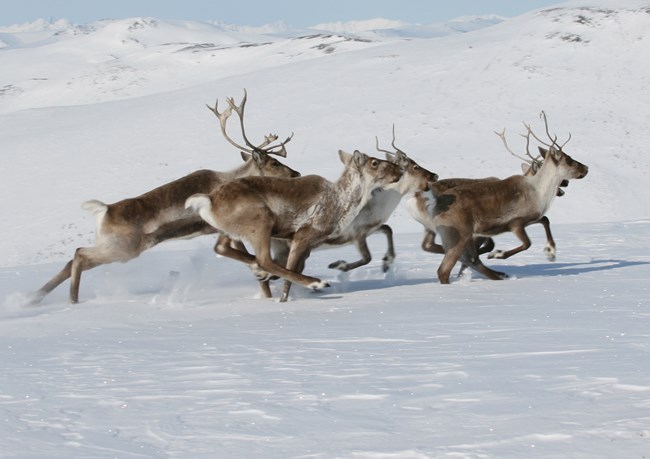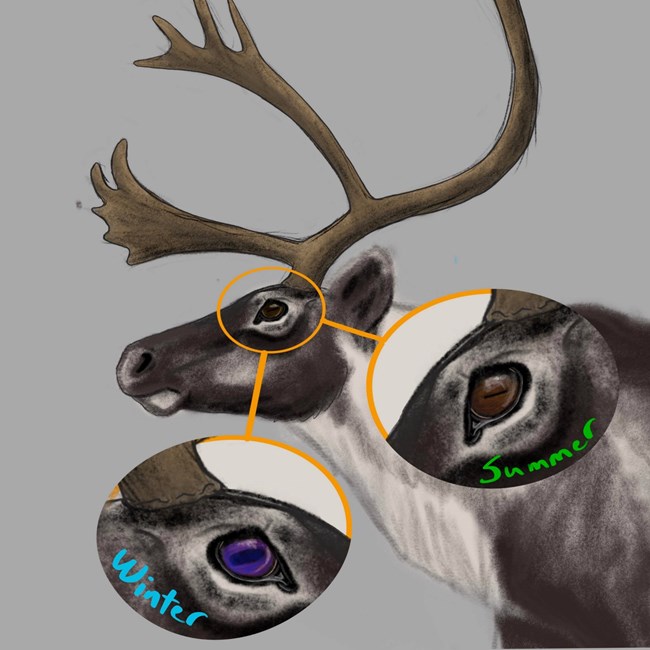
Kyle Joly
Many Alaska Natives in this region identify themselves as “caribou people.” Caribou are a part of their history, traditions, and psyche. Herd size naturally oscillates, which may be related to climatic cycles. In 1976, the Western Arctic Herd reached a population low of 75,000 animals, but it rebounded to become one of the largest herds in the world, nearing 500,000 animals in 2003. Since that time, it has steadily declined to 201,000 in 2016 resulting in restrictions in sport and subsistence harvests. Despite the decline, the herd continues to have a significant role in the structure and function of ecosystems in northwest Alaska. The effect of the herd on its ecosystem is still not fully understood. A herd of this size can substantially affect its habitat, which covers all of northwest Alaska (over 360,000 km2), its primary predators (wolves and grizzly bears), as well as a suite of other animals through cascading trophic effects. For example, decreasing abundance of caribou could lead to fewer wolves, which could impact the abundance of the foxes or beaver.
We monitor caribou in all the Arctic parks to:
-
Define seasonal ranges (calving, insect relief, summer, winter).
-
Define migratory routes.
-
Detect changes in range distribution over time.
-
Detect changes in adult survivorship over time.
-
Detect changes in migration routes and movement phenology over time.
Contact: Kyle Joly

Art by Christina Nelson/USFWS
Check out these caribou adaptations
Last updated: February 21, 2022
